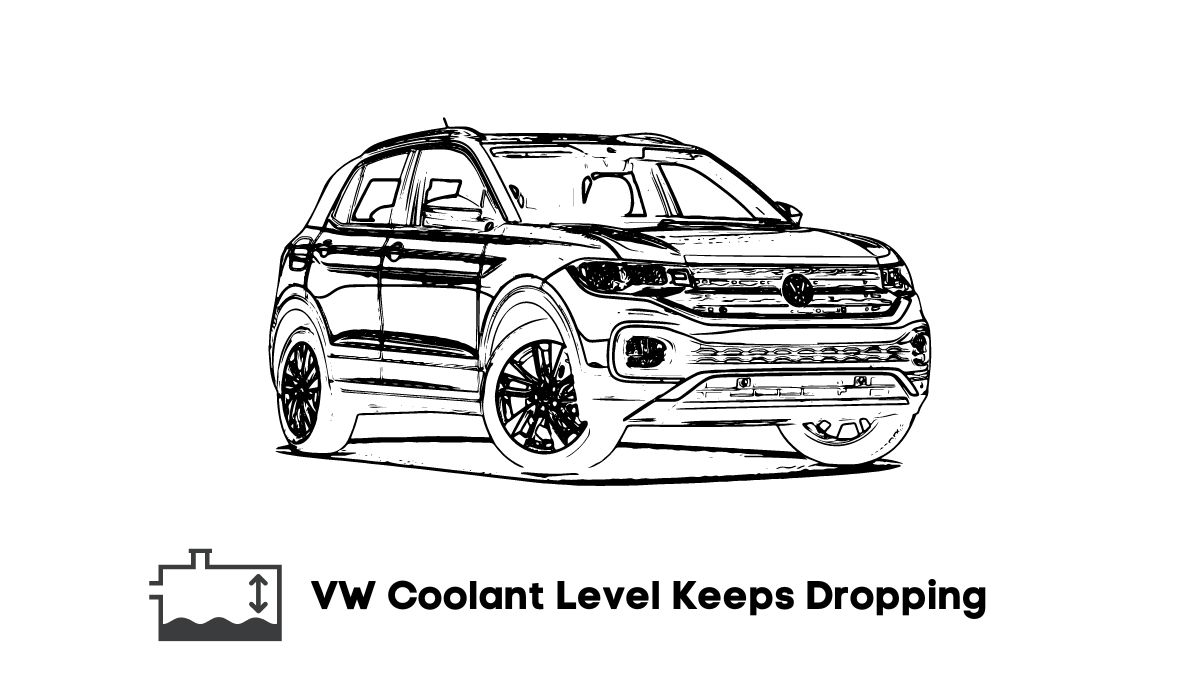Coolant is aptly named. It keeps the engine from overheating. Falling coolant levels don’t make sense to newcomers. This is because the coolant lives in a closed system in the car. It runs through the engine’s parts before returning to the reservoir. Therefore, coolant levels should remain unchanged regardless of how frequently you drive.
In an ideal situation, people will add new coolant because the old one deteriorated, picking up contaminants and losing its ability to control the engine’s temperature, not because coolant levels fell. Low coolant levels in a VW should concern you because they attract the following symptoms:
- The temperature will spike. The temperature gauge will warn you by swinging towards the red, alerting you that things have gone wrong.
- The vehicle’s fuel economy will fall because the engine is running at a high temperature. The car will consume more fuel even though you’re still traveling the same distance.
- The vehicle’s emissions will increase. A paper showing the factors that affect vehicle emissions (Factors Affecting Vehicle Emissions [Sinha and Labi 2007]) highlighted engine power, fuel delivery system, and engine operating mode as significant variables. All these areas will suffer once coolant levels fall.
- You will notice a sweet scent. Medical News Today warns that antifreeze is toxic. Animals are more vulnerable to the substance because coolant can leak whenever you park your car. Any animals in the vicinity will die after licking it off the ground. You may lose your pets because the ethylene glycol in antifreeze is sweet.
You can protect your children and pets by identifying the factors responsible for falling VW coolant levels and fixing them. Look for the following:
1). Damaged Coolant Hoses
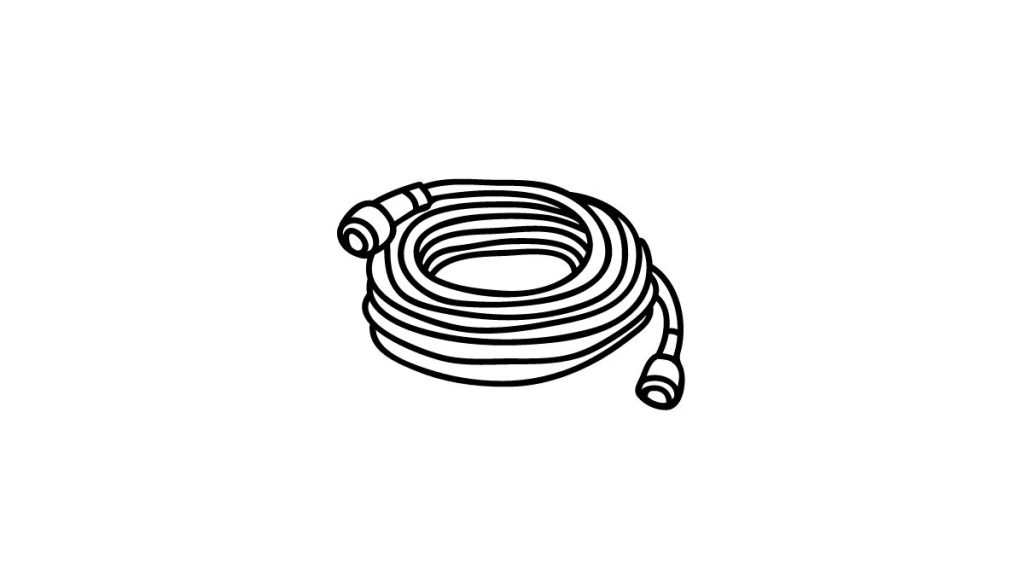
The coolant is useless without a radiator hose because these lines transport the substance. You can drive with a cracked coolant if the journey is short. Some people extend the distance by turning the heater on and moving slowly. Hoses can fail because of the following:
- A defective cap will increase the pressure dramatically, bursting the hose.
- Radiator hoses have a limited lifespan. They will wear out after five or more years of use.
- Excess heat from the engine can destroy older radiator hoses because the coolant is too degraded to lower the temperature.
- Radiator hoses can develop clogs.
- If you patch a cracked hose, the patch will eventually fail.
You can tell that a bad radiator hose is approaching the end of its life because it manifests one or more of the following symptoms:
- The hose will bulge.
- Visible cracks and splits will appear along the hose’s surface.
- The hose feels crunchy when you squeeze it.
These signs should encourage you to replace the hose before it breaks at an inopportune moment. You can apply the following solutions to the damaged coolant hose:
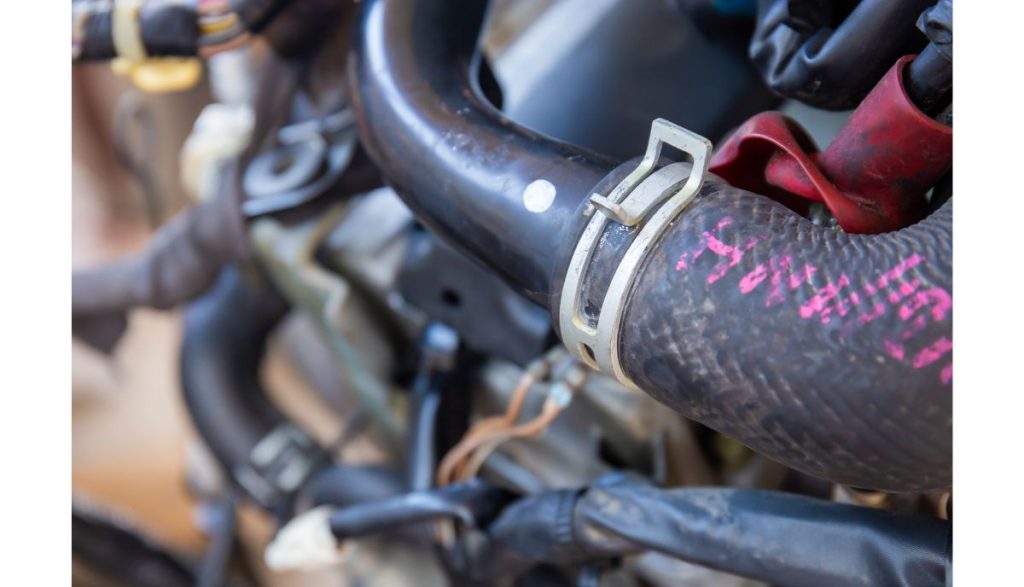
- Turn the vehicle off and wait for the engine to cool.
- Open the hood and inspect the hose.
- If the hose feels loose, tighten the radiator clamps.
- Use insulating tape to patch a hole or crack. This approach only makes sense if you intend to drive to the closest repair shop immediately.
- If the cracks are near the ends, cut off the damaged section to shorten the hose. This method only works if the shorter hose reaches the connection point.
- Install a new hose pipe.
- Identify the factors responsible for the damage and fix them. Otherwise, the new hose pipe will also fail.
- Rainbow Muffler and Brake encourages drivers to focus their search on the curves, bends, and connection points. Cracks usually appear in these areas.
- Replace weak or rusty clamps.
2). Leaking Head Gasket
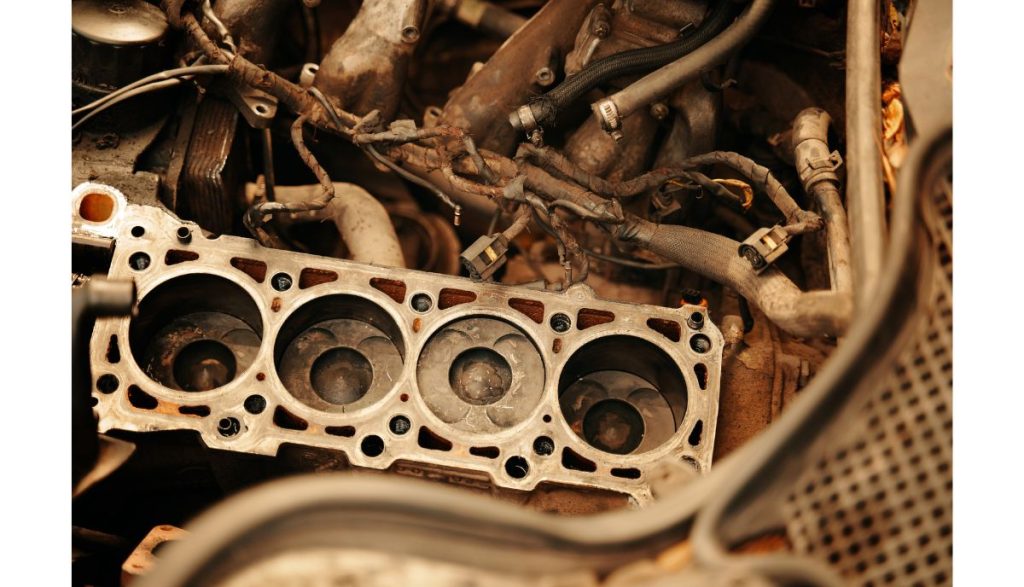
The gasket sits between the cylinder head and the engine block. According to this paper from the School of Mechanical Engineering (Beijing Institute of Technology), the gasket is an irreplaceable sealing component. It keeps the coolant and oil separate. A faulty gasket will warn you by manifesting the following symptoms:
- White smoke because coolant has mixed with the oil.
- White smoke from the exhaust because coolant entered the combustion chamber and burned.
- The engine’s power will decrease.
- The exhaust will generate a sweet scent because of the coolant.
- The engine will overheat because of leaking antifreeze.
Why would these symptoms appear? What causes a blown head gasket? The following are usually at fault:
- You installed the gasket poorly.
- The gasket is old. Holts Auto associates them with a lifespan of 200,000 miles.
- Overheating engine.
- Dramatic and unexpected temperature changes.
- High mileage.
- Pre-ignition.
- You bought a low-quality gasket.
Becker Service Cente discourages consumers from driving with a blown gasket. You risk permanent engine damage. While a head gasket sealer can fix the problem temporarily, you should replace a blown head gasket. Don’t try to repair it.
Consumer Affairs puts the cost of replacing a head gasket at $3,400 – $5,400, depending on the model.
3). Faulty Radiator Cap
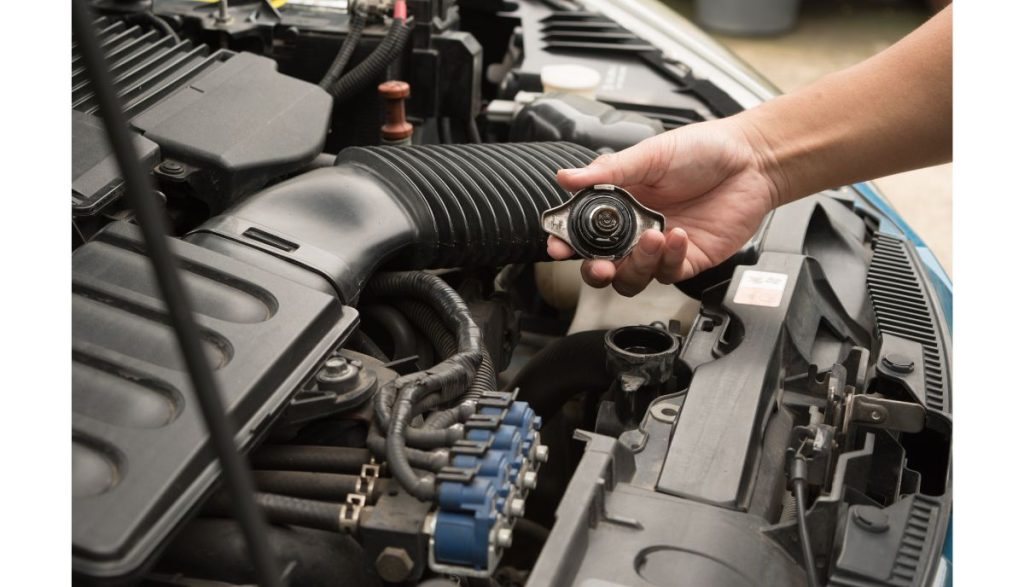
Cars have caps with a release valve that harmlessly lowers the pressure when the need arises. Symptoms of a bad radiator cap include the following:
- The coolant will leak.
- The engine will overheat.
- The coolant will boil and evaporate.
- The hoses will collapse because of excess pressure.
- You will replenish the coolant more frequently than usual.
- The reservoir will overflow.
- Air will enter the cooling system because the cap has failed to create an adequate seal.
But how can you tell that you have a bad radiator cap? After all, the symptoms above can manifest because of other reasons:
- Inspect the radiator cap. Check the fiber sealing ring and press the relief valve. The small valve should move freely.
- Warm the engine for ten minutes before loosening the cap to the first stop. Wear a glove and place a thick cloth on the lid for added protection. You should hear hissing as the steam escapes to show that the VW’s cap is maintaining the correct pressure.
- Ask your mechanic to recommend a suitable radiator cap testing kit.
You can replace a bad radiator cap for $10 – $30. These components are inexpensive. Radiator caps can be replaced in ten minutes or less. Therefore, labor fees shouldn’t concern you. The pressure rating of the new cap should match the old one.
4). Damaged Radiator
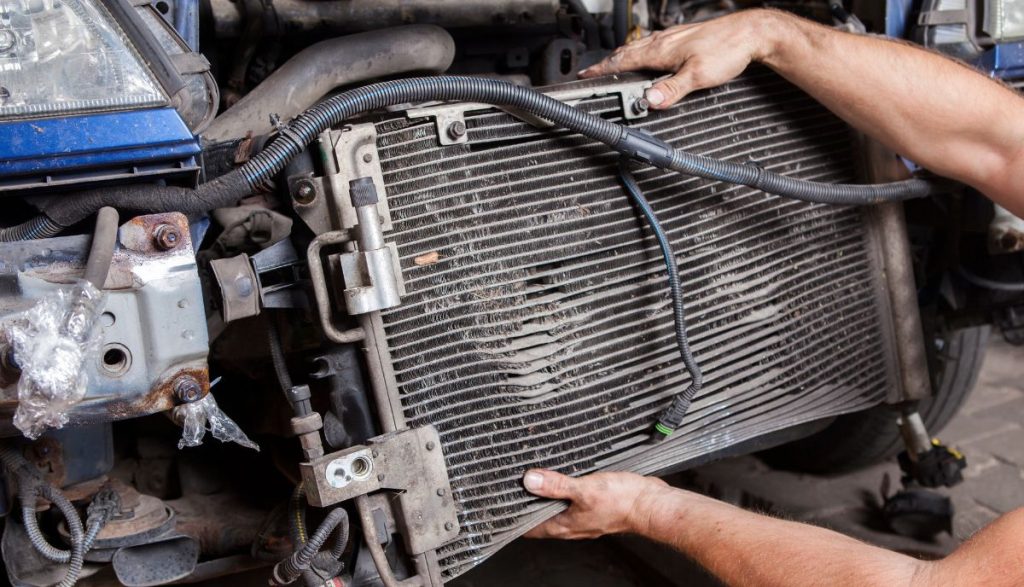
The radiator is at the heart of a VW’s cooling system. Unfortunately, it is vulnerable to numerous threats, including the following:
- Debris from the road can perforate the radiator while you drive.
- Radiators can corrode.
- The mounting brackets and bushings can sustain damage because of excess vibrations.
- Debris and contaminants can prevent the coolant from flowing by clogging the radiator.
Keep an eye out for black sludge. It can lead to corrosion and leaks when it accumulates, reducing the vehicle’s fuel economy. Regular maintenance can reduce the radiator’s rate of wear and tear.
Unless you prefer to perform this task yourself, a mechanic will charge you $35 – $100 to flush the coolant. They may also charge you $150 – $200 to replace faulty radiator hoses. Some people solder punctured radiators.
Before you replace it, inspect the radiator. Make sure the component is well and truly punctured. Spray the radiator with a water hose or air. Large punctures stand out.
However, their smaller counterparts may go unnoticed unless you remove the surface debris. Depending on the severity of the problem, you may attempt to fix the leak by turning the car off, waiting for the engine to cool, and pouring cooling system sealant into the radiator.
The product will plug the punctures, preventing the coolant from escaping. If you succeed, the vehicle should be ready to go within half an hour. This only applies to small cracks and breaks.
A large puncture requires commercial epoxy to seal. This process is longer. You must drain the radiator to complete repairs. If you have doubts, let a mechanic determine whether or not you need a new radiator. You may spend $400 – $900 to replace a radiator.

